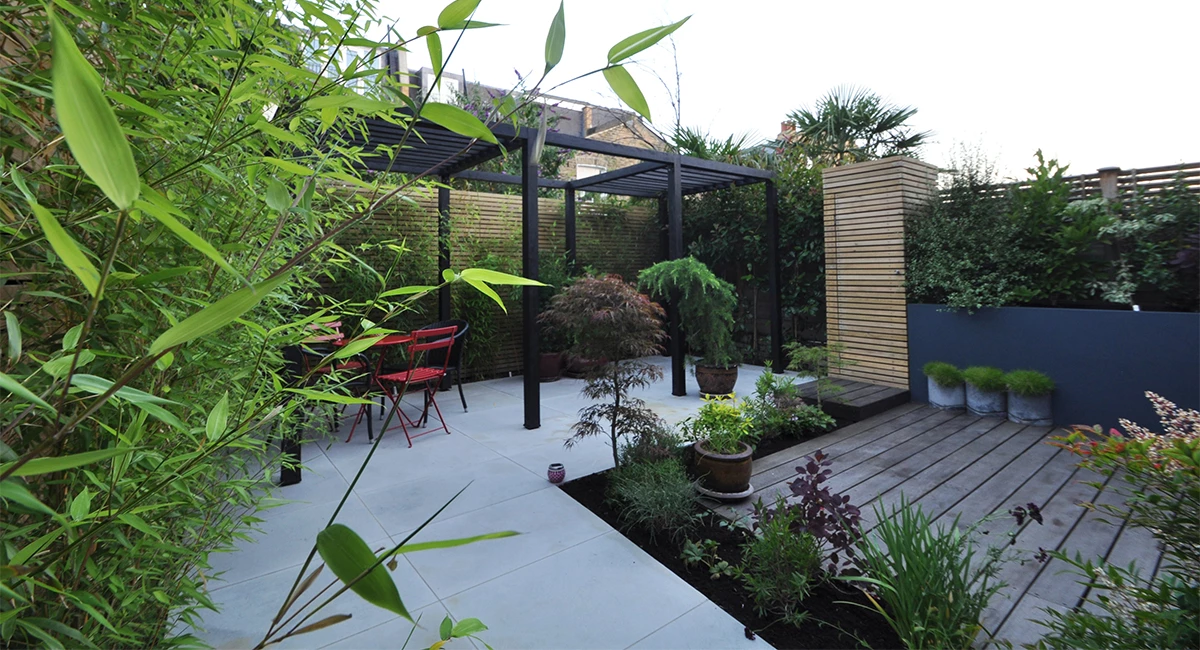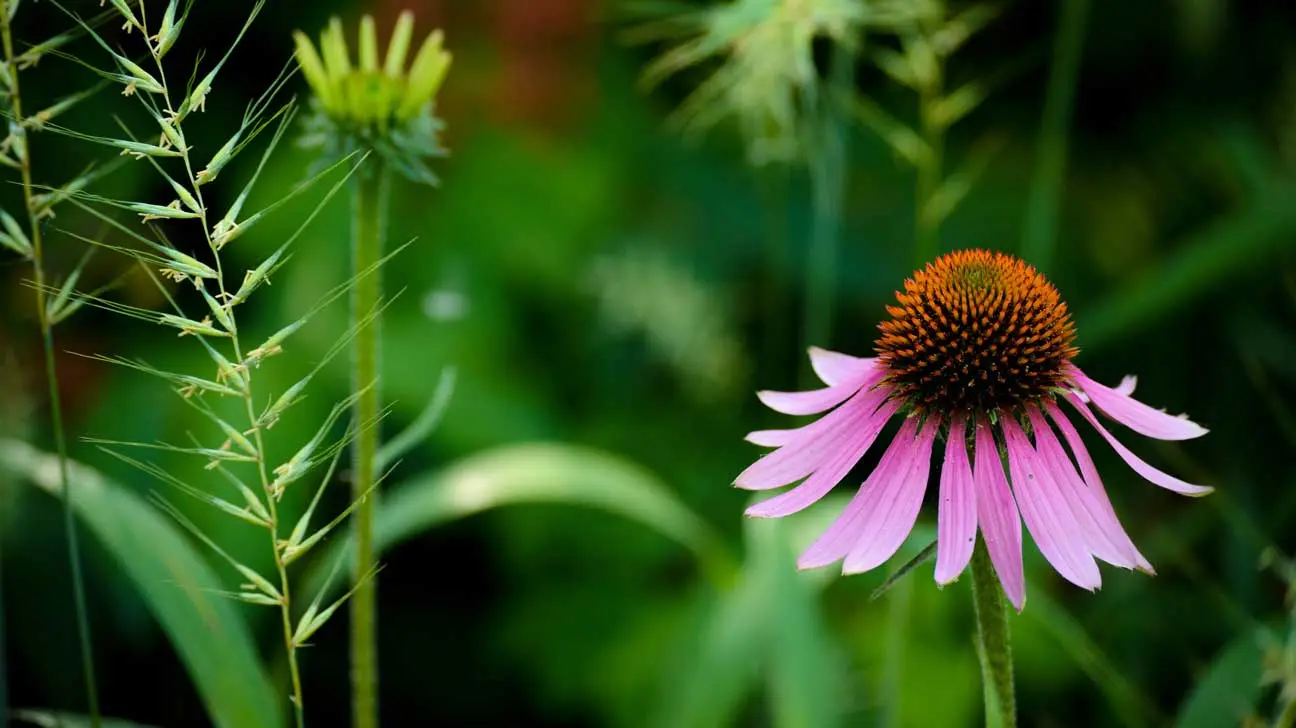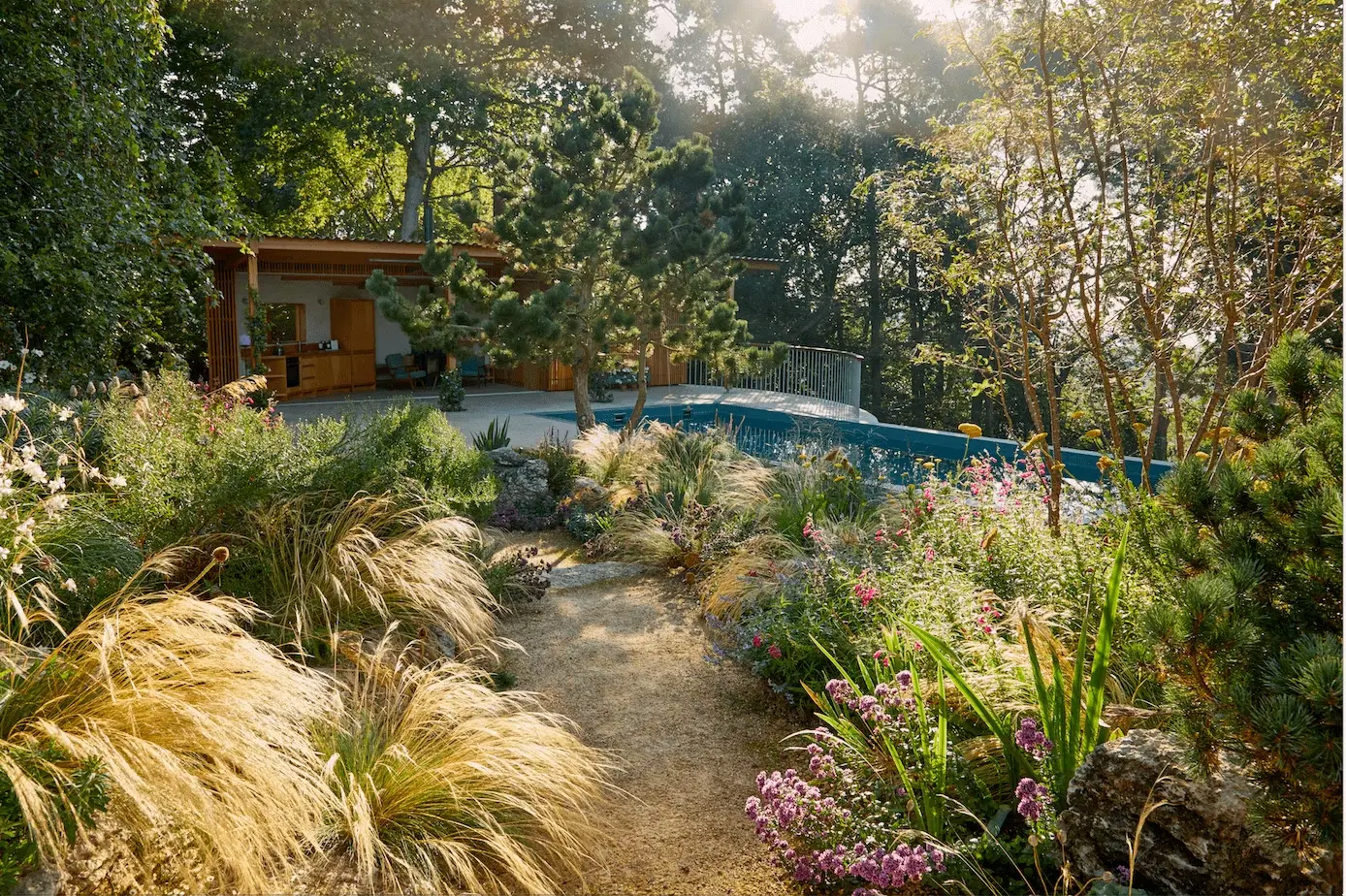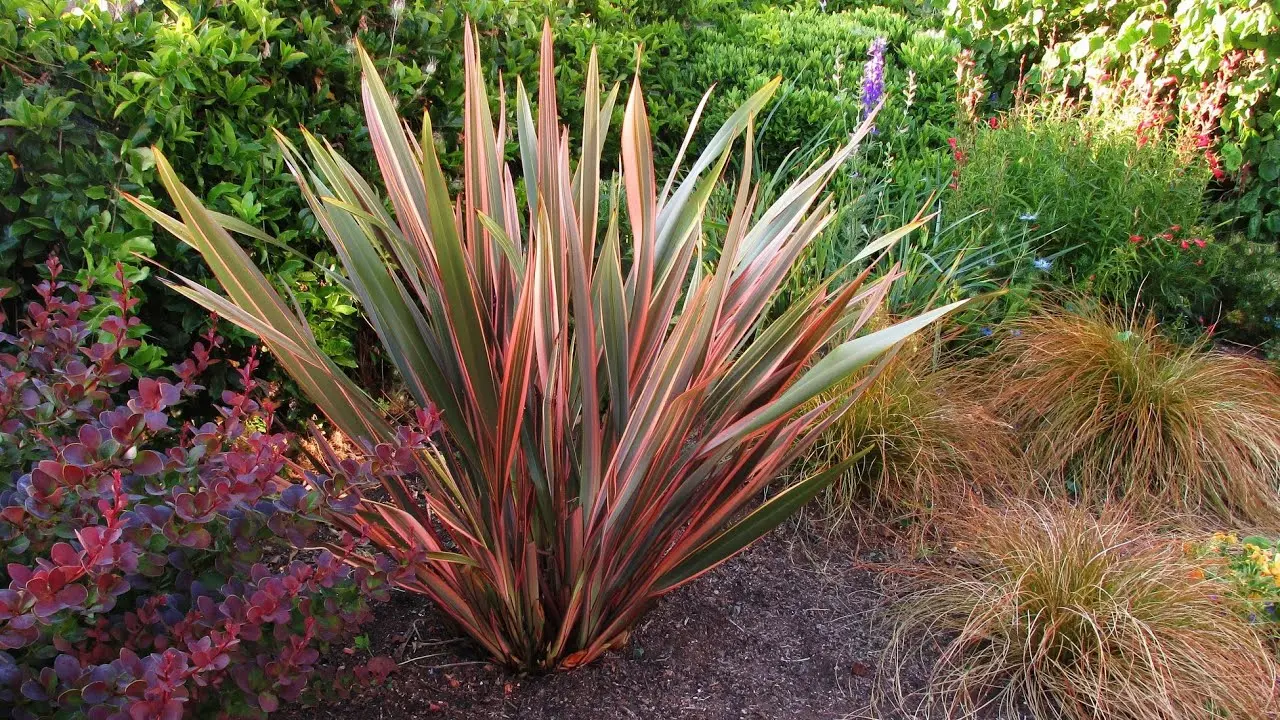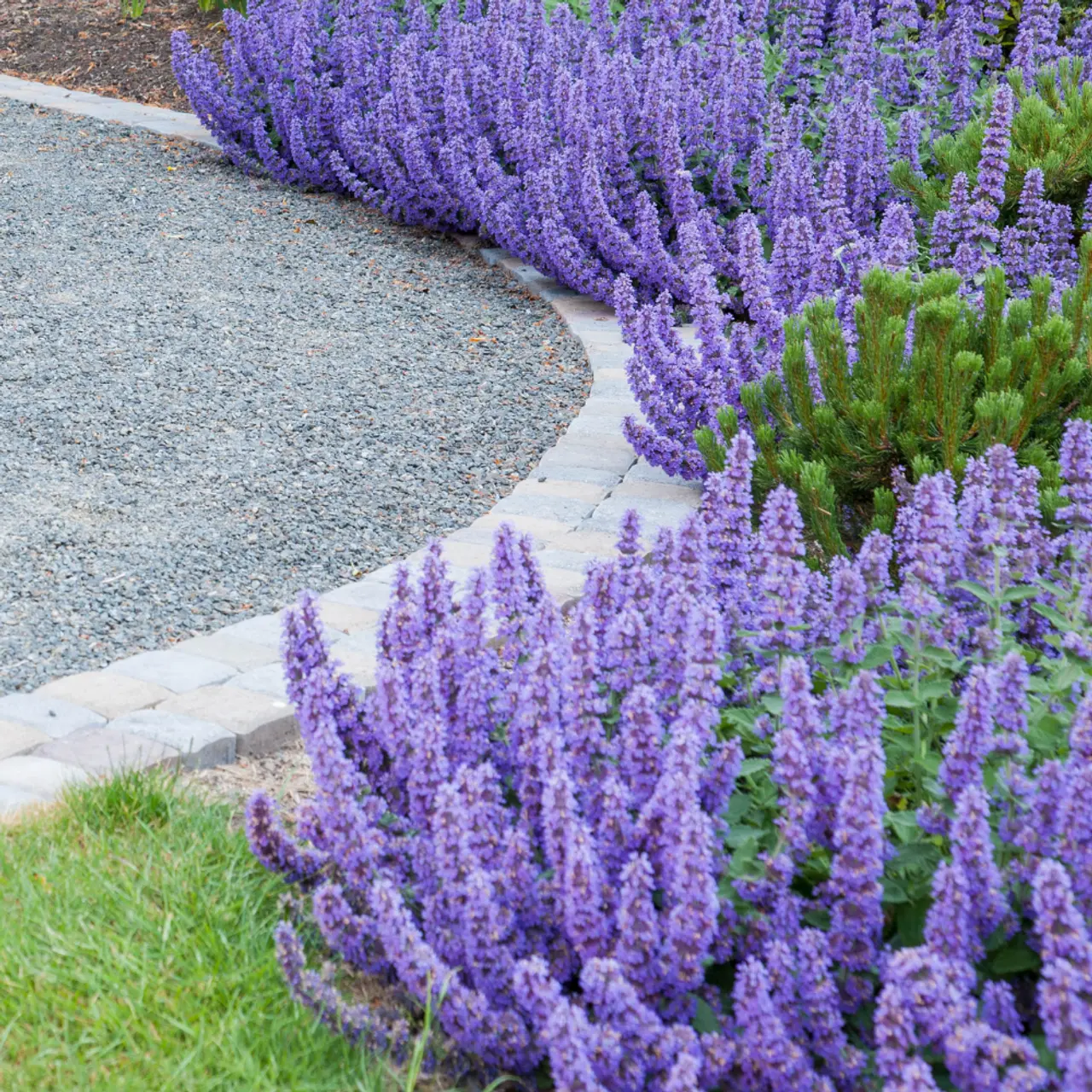Contemporary gardens feature clean sharp lines and incorporate modern and minimal structures and materials. The style works for large or small gardens and traditional structures such as water fountains can take centre stage and boast a sleak modern look. Reducing materials and colours is essential to creating the clean contemporary garden design so let’s take a look at these modern gardens to help you create a style that you’ll love.
Bold straight lines and geometric layouts create the sharp look typical of contemporary gardens. A great place to start for this look is in the fence panels bordering your garden. Slotted panels come in different materials and stains to fit your own preference. They are a great backdrop for the rest of the garden and pair well with small to medium plants and bushes. Stick to black, grey or natural wood for these backdrops as not to distract from this minimal style.
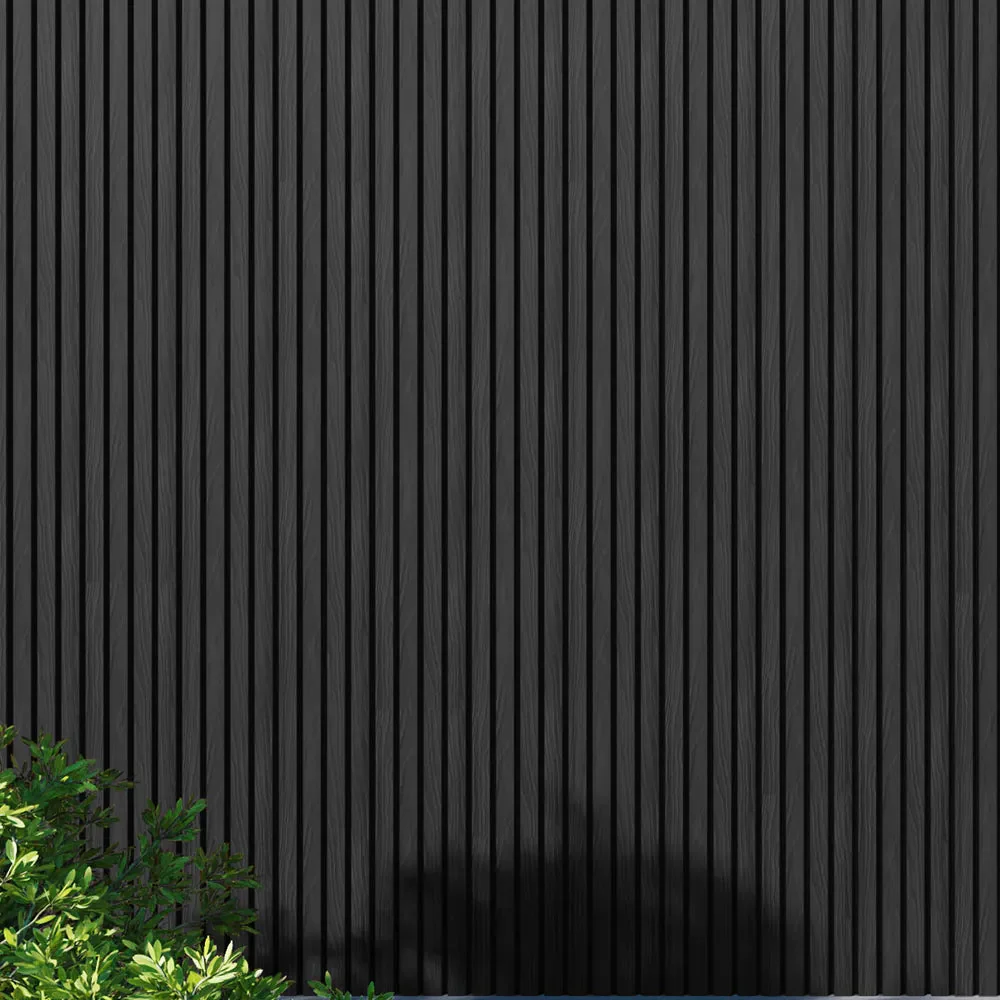
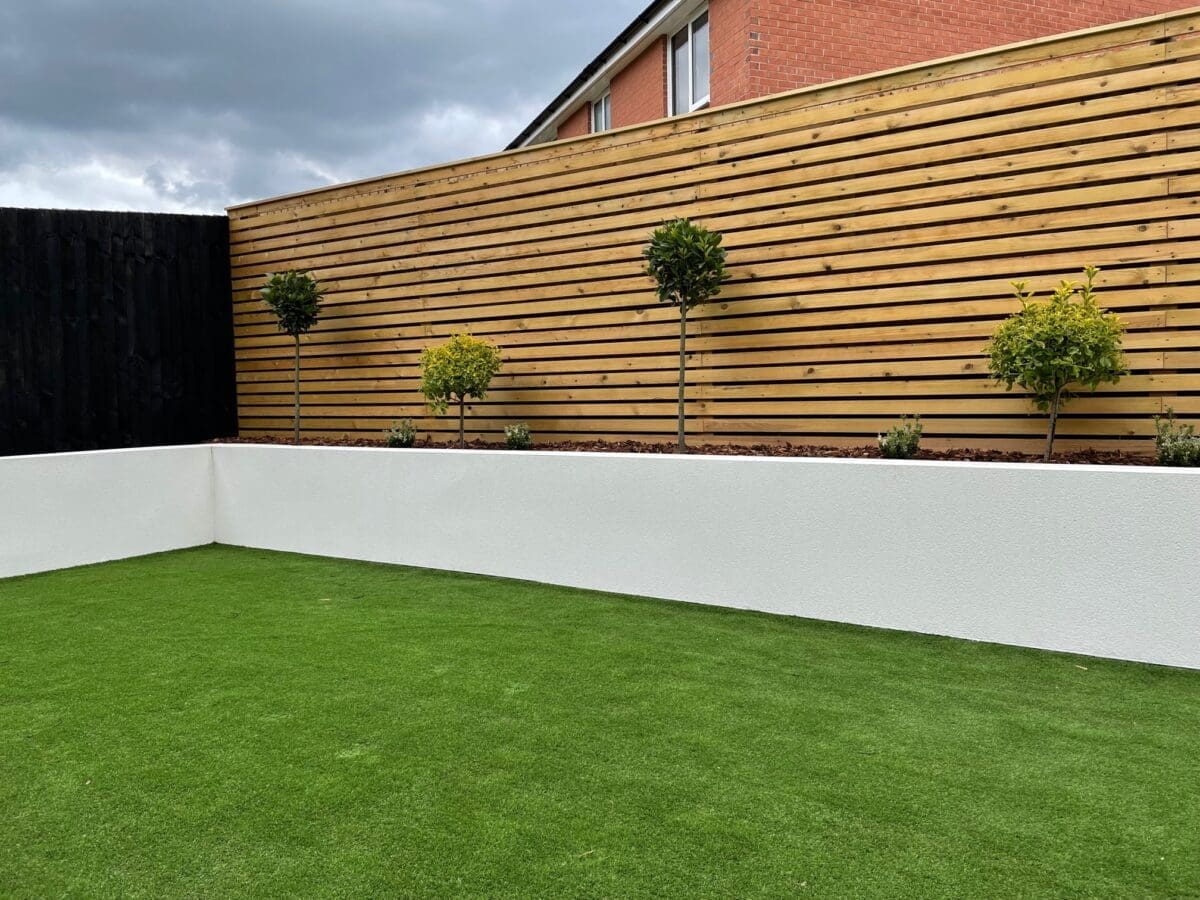
Choosing contemporary style doesn't mean everything needs straight edges. Rounded shapes—like decorative spheres, large round pots, or circular lawns and pathways—work beautifully in larger gardens. While winding paths don't suit contemporary design, circles can still play a role. Notice how the round grass area in this image contrasts with the garden fence while maintaining a modern look.
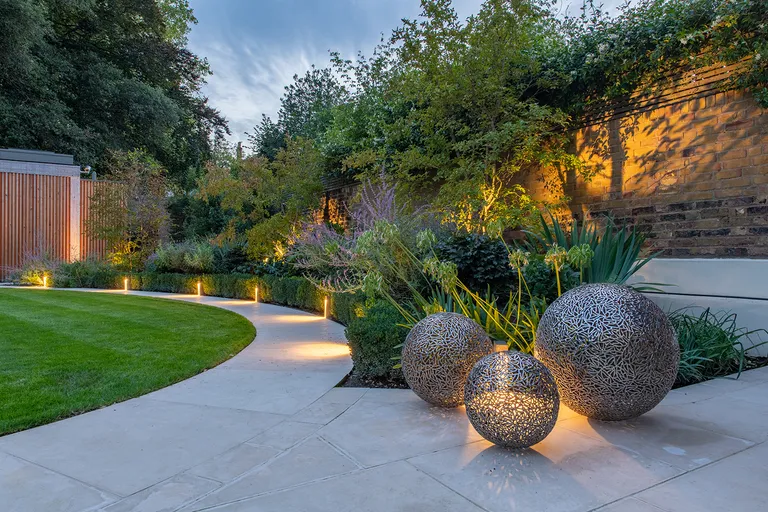
Concrete or painted concrete and wood can be paired well and balance one another creating a modern feel. Seating areas in contemporary spaces usually conform to the straight lines and edges talked about earlier so don’t mix in a round table and chairs, aim for creating something that blends with the space.
A pergola is the perfect area to create sheltered space within your garden. Often paired with comfortable cotton seating it becomes a space of relaxation. Pergolas can also be bought in many materials to match the rest of your garden and you can grow climbing plants up and across them to create shelter if you choose a wooden slatted pergola.
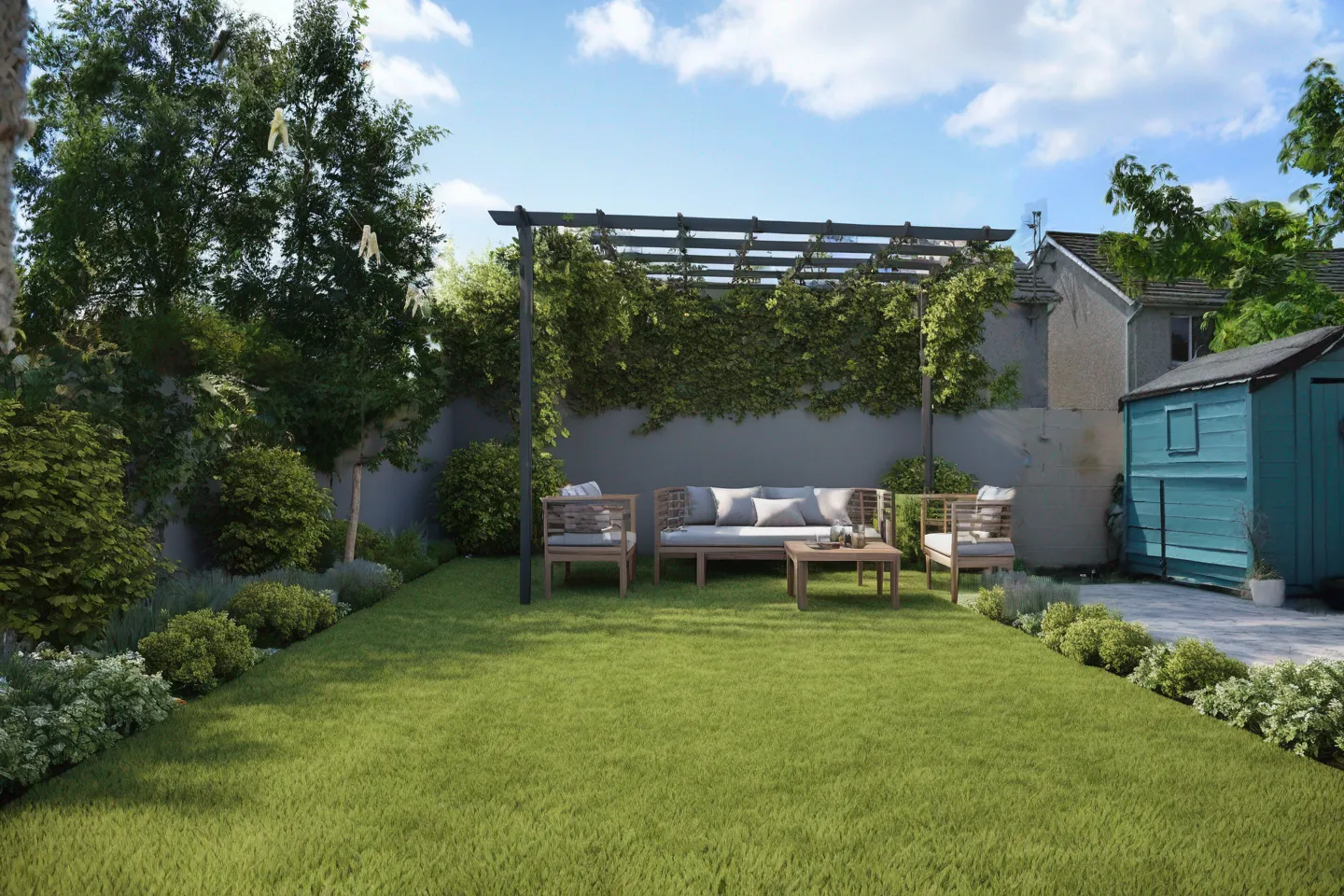
Plant choices for contemporary gardens
When choosing plants for your contemporary garden there’s two options recommended before you get started. Choose a limited amount of plants, adding the the architectural interest of the garden. Or plant densely with large leaved foliage and grasses to add a naturalistic feel to the space while keeping it contemporary.
Keep it no more than three colours in your plant colour choices to stick to the contemporary design principles. Too many colours will make it feel wild and unstructured and not contemporary.
Key Takeaways
- Contemporary gardens emphasize clean lines, sharp edges, and minimal materials—typically featuring geometric statements and limited colour palettes
- Slotted fence panels and structured hardscaping in materials like concrete, timber, and painted brick create the modern backdrop
- Curves can be incorporated through spheres, round pots, or circular lawns to add contrast while maintaining a sharp aesthetic
- Seating areas and pergolas should follow geometric layouts and use materials that blend seamlessly with the garden's overall design
- Plant selection should be limited to three colours maximum, focusing on architectural forms or dense naturalistic foliage
- Top plant choices include bamboo for screening, ornamental grasses for movement, and bold architectural plants like Phormium, Yucca, and Agave
- Seasonal flowering plants such as Alliums, Lilies, Salvias, and Agapanthus add sculptural interest and controlled colour without disrupting clean lines
- The style suits gardens of any size and balances modern structures with natural elements for a timeless, sophisticated look
FAQ's Building a Contemporary Garden
How much does a contemporary garden cost?
The cost of designing and building a contemporary garden can vary widely depending on materials, features, and whether you use a professional. A small DIY contemporary garden might start from around £500–£2,000, while professionally designed small gardens can range from £3,000–£8,000. Medium gardens often cost between £8,000–£15,000, especially if they include features like pergolas, decking, or concrete elements. Large, high-end contemporary gardens with custom structures and premium materials can exceed £20,000.
How can I use lighting in my contemporary garden during the evening?
Lighting in a contemporary garden should be sleek, subtle, and strategically placed to highlight clean lines and key features. Use recessed ground lights along pathways, spotlights to accent architectural plants or sculptures, and LED strip lighting under seating or steps for a modern, floating effect. Read more about lighting here
What maintenance does a contemporary garden need to keep looking clean and structured?
To maintain a contemporary garden, regular upkeep is essential to preserve its clean, structured look. Key routines include pruning plants to maintain their shapes, removing weeds promptly, and sweeping or pressure-washing hard surfaces like patios and pathways.

